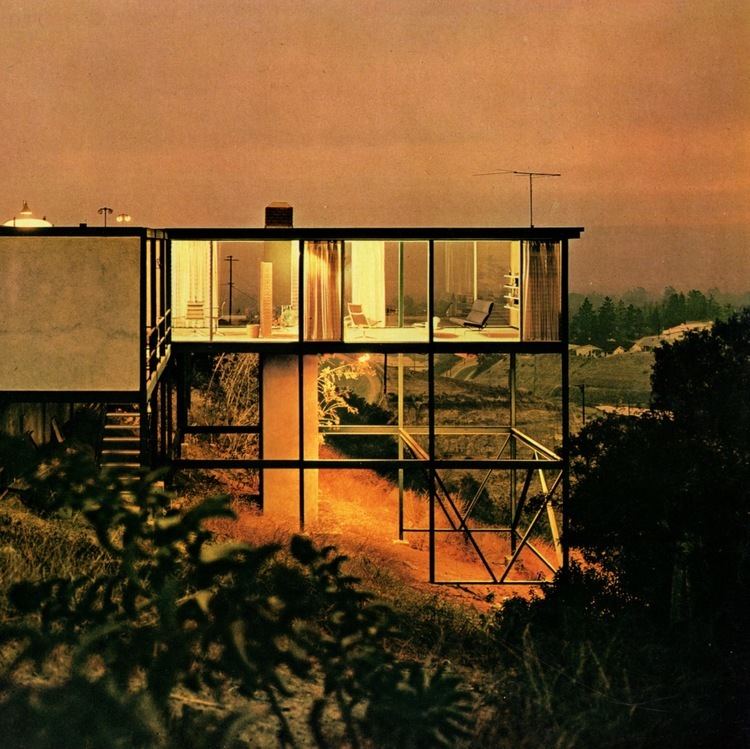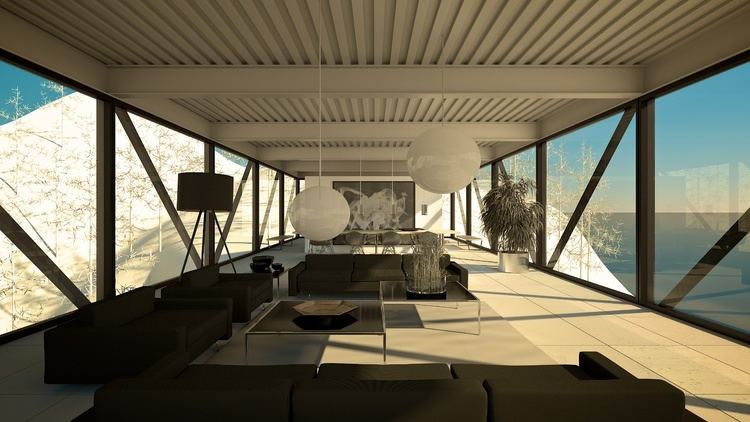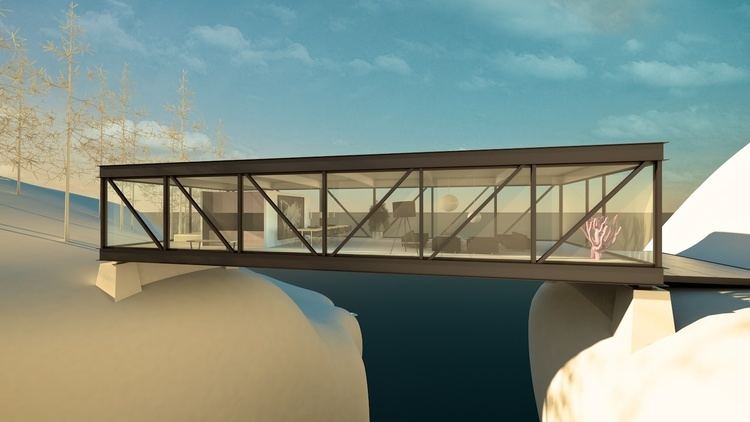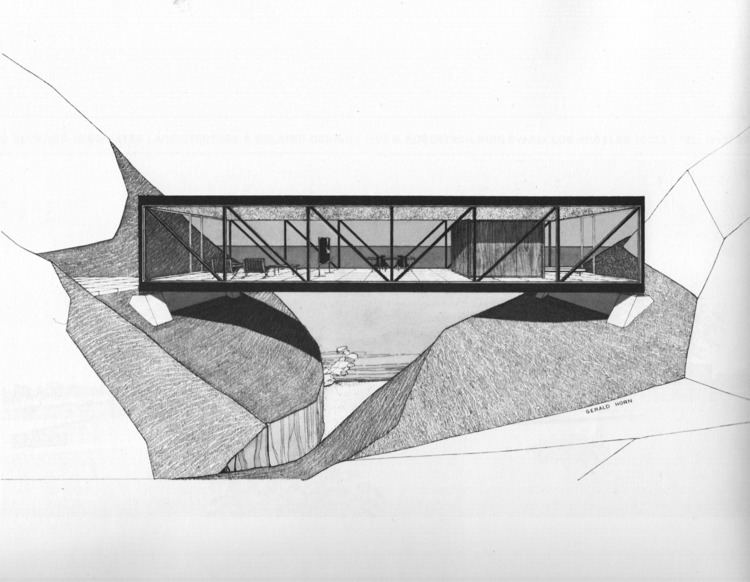Name Craig Ellwood Role Architect | Education Belmont High School Books Craig Ellwood: 15 Houses | |
 | ||
Children Erin Ellwood, Jeffrey Ellwood, Adam Ellwood Similar People Gloria Henry, Philip Johnson, Walter Gropius | ||
Craig Ellwood (1976)
Craig Ellwood (April 22, 1922 – May 30, 1992) was an influential Los Angeles-based modernist architect whose career spanned the early 1950s through the mid-1970s. Although untrained as an architect, Ellwood fashioned a persona and career through equal parts of a talent for good design, self-promotion and ambition. He was recognized professionally for fusing of the formalism of Mies van der Rohe with the informal style of California modernism.
Contents
- Craig Ellwood 1976
- Craig Ellwood Jerrold Lomax Dan Dworsky 1976
- Personal life
- Architectural Philosophy
- Death
- Significant projects
- References

Ellwood was born Jon Nelson Burke in Clarendon, Texas. Along with many others in the 1920s, Ellwood's family moved west, following U.S. Route 66, finally settling in Los Angeles in 1937. There, Ellwood, as Johnnie Burke, attended Belmont High School, where he was class president before graduating in 1940. In 1942, Ellwood and his brother Cleve both joined the U.S. Army Air Corps. Ellwood served as a B-24 radio operator, based with Cleve in Victorville, California until his discharge in 1946.

After his discharge, Burke returned to Los Angeles and set up a company with his brother Cleve and two friends from the war, the Marzicola brothers, one of whom had a contractor's license. The four men called their firm 'Craig Ellwood' after a liquor store called Lords and Elwood located in front of their offices. Burke later legally changed his name to Ellwood. In 1948, he joined the firm Lamport Cofer Salzman (L.C.S.) as a construction cost estimator, having acquired this skill during his work for the Craig Ellwood Company. Ellwood also studied structural engineering through UCLA extension night school for five years. He became increasingly involved in design and architecture, resulting in Ellwood's first commissions, all for residences.

Ellwood established 'Craig Ellwood Design' in 1951. There Ellwood would provide the commissions and the vision, and it was up to USC-trained architect Robert Theron 'Pete' Peters, and later others, to provide the technical realization, drawings and the required sign-off of a licensed architect. Early projects included Case Study House 16 in 1952. The designs were well received by both the trade and potential clients, often receiving favorable coverage in influential publications like John Entenza's Arts & Architecture, often arranged for by Ellwood personally. Thus the firm received a growing stream of both residential and commercial commissions, and Ellwood's style matured to fully embrace the concepts put forth by International Style architects, particularly Mies van der Rohe.

By the late-1950s, though not a licensed architect, Ellwood was nonetheless a sought-after university lecturer, eventually giving a series of talks at Yale University, and teaching at the University of Southern California and California State Polytechnic University, Pomona's Department of Architecture.

Though Ellwood's office expanded with the size and number of his commissions, it was never a particularly profitable enterprise. It continued through the mid-1970s, with several notable projects, including the master plan for the Rand Corporation's headquarters in Santa Monica, California, a number of Xerox and IBM offices, and the trademark "bridge building" dramatically spanning an arroyo and a roadway at Art Center College of Design in Pasadena. As published in the 1976, the Art Center building is recognized as the work of Craig Ellwood Associates, with James Tyler as design architect and Stephen Woolley as project architect. Some sources have sought to re-credit this building solely to Tyler, who had worked for John Sugden (a former associate of Mies) and was the architect of the Art Center addition, completed in 1991. The practice closed in 1977 and Ellwood retired to Italy to focus on painting and restoring a farm house near Ambra, Italy.

Craig Ellwood, Jerrold Lomax & Dan Dworsky (1976)
Personal life
Elwood's first wife was Faith Irene Walker, known as "Bobbie." In 1949 Ellwood married actress Gloria Henry. The union produced three children Jeffrey, Adam, and Erin Ellwood, before the couple eventually divorcing, in 1977. He then married Anita Eubank to live in Perigee, Valdarno, Italy. After divorcing Eubank, he and his fourth wife, Leslie Hyland Ellwood, had a daughter, Caitlin Emily Ellwood.
Architectural Philosophy
Craig Ellwood stated his architectural philosophy in the March 1976 issue of L.A. Architect:
"The essence of architecture is the interrelation and interaction of mass, space, plane and line. The purpose of architecture is to enrich the joy and drama of living. The spirit of architecture is its truthfulness to itself: its clarity and logic with respect to its materials and structure.
"Building comes of age when it expresses its epoch. The constant change in technology demands a continuously maturing expression of itself. When technology reaches its fulfillment in perfect equilibrium with function, there is a transcendence into architecture.
"The truth about truth is it is – waiting for us to discover it. The consciousness of truth is not static, but ever progressively unfolding. We must strive for intrinsic solution, not extrinsic effect. The moment form becomes arbitrary, it becomes novelty or style – it becomes something other than architecture. Materials and methods will certainly change, but the basic laws of nature make finally everything timeless.
"Architecture, by its own nature, must certainly be more than an expression of an idea. Art in architecture is not arbitrary stylism or ethereal symbolism, but rather the extent to which a building can transcend from the measurable into the immeasurable. The extent to which a building can evoke profound emotion. The extent to which a building can spiritually uplift and inspire man while simultaneously reflecting the logic or the technique which alone can convey its validity to exist."
Death
Craig Ellwood, the architect known for his minimal steel-and-glass designs, died of heart failure, on May 30, 1992, in Pergine Valdarno, Italy, where he lived for some years with his wife, Leslie. He was 70 years old.
